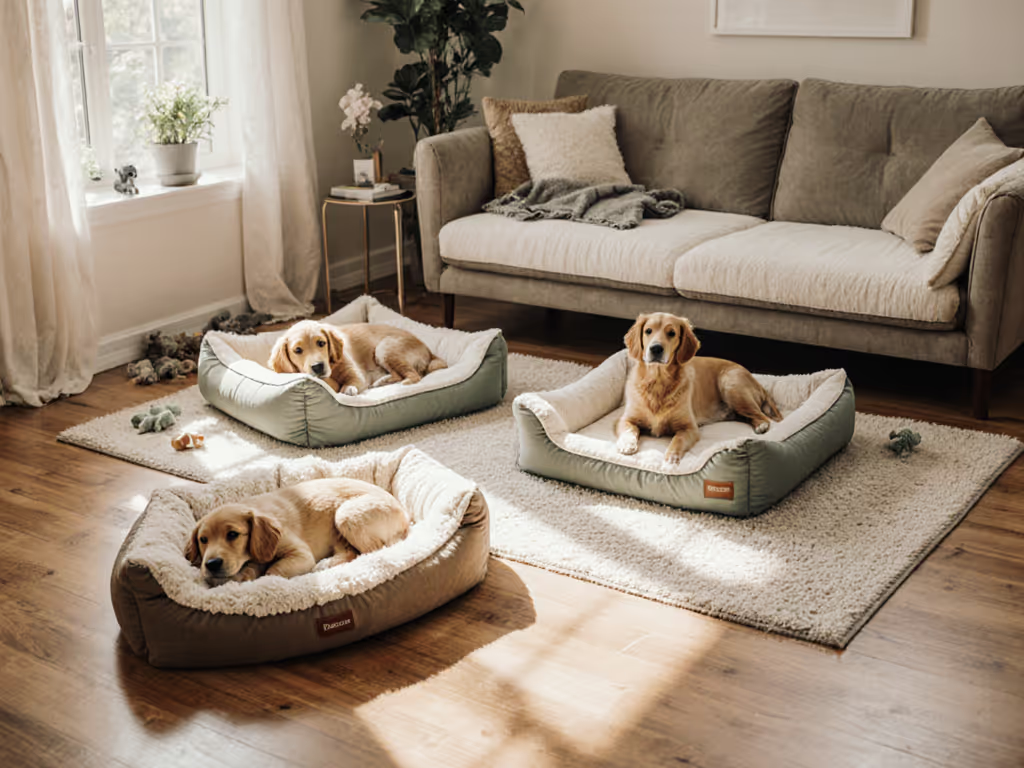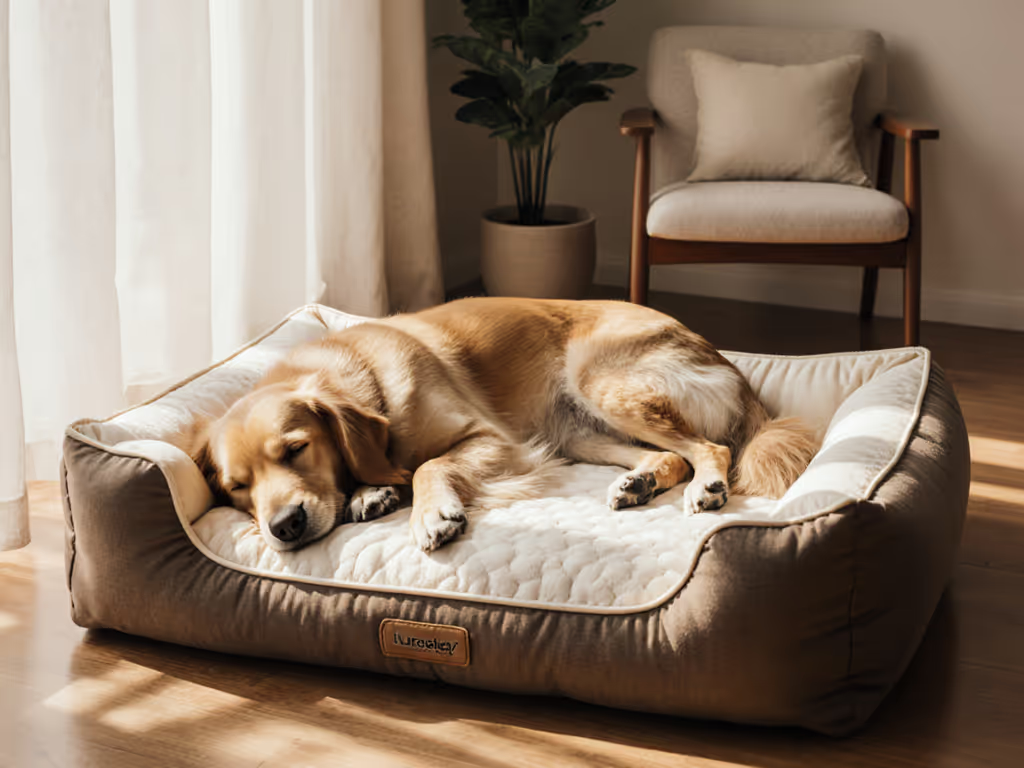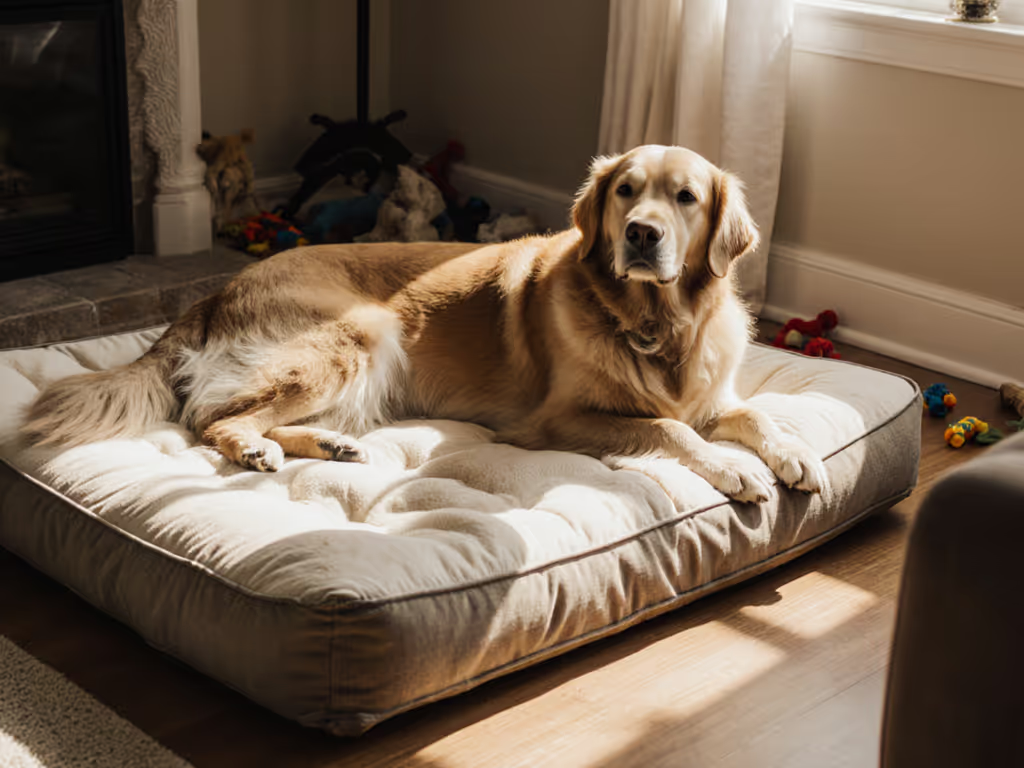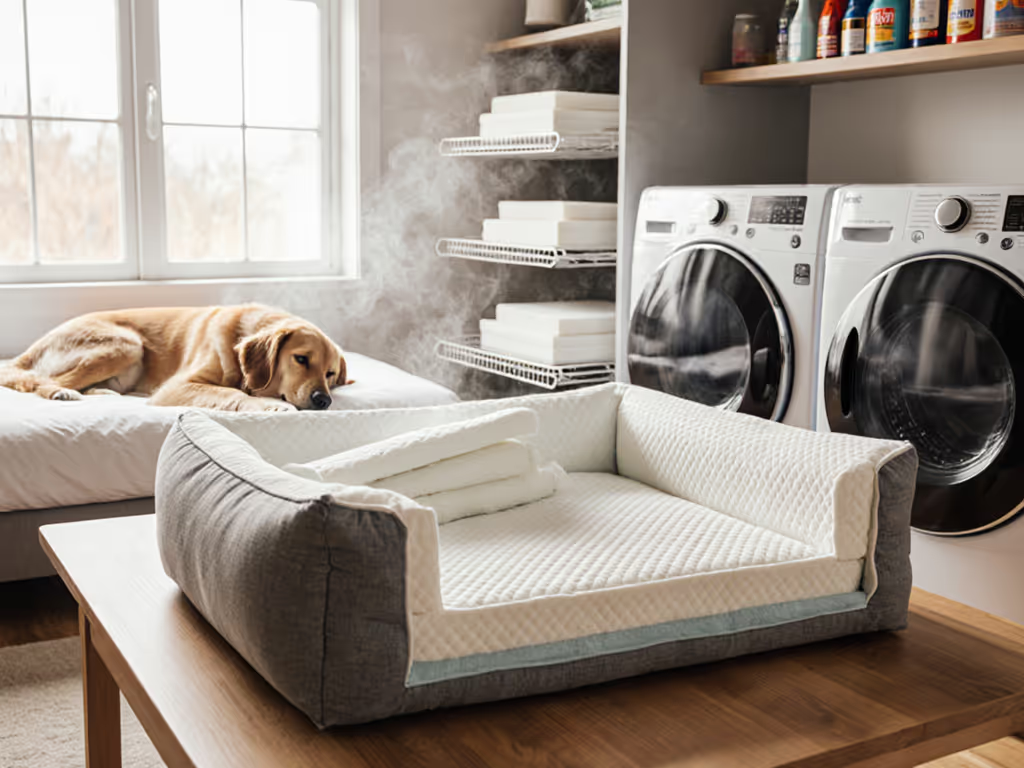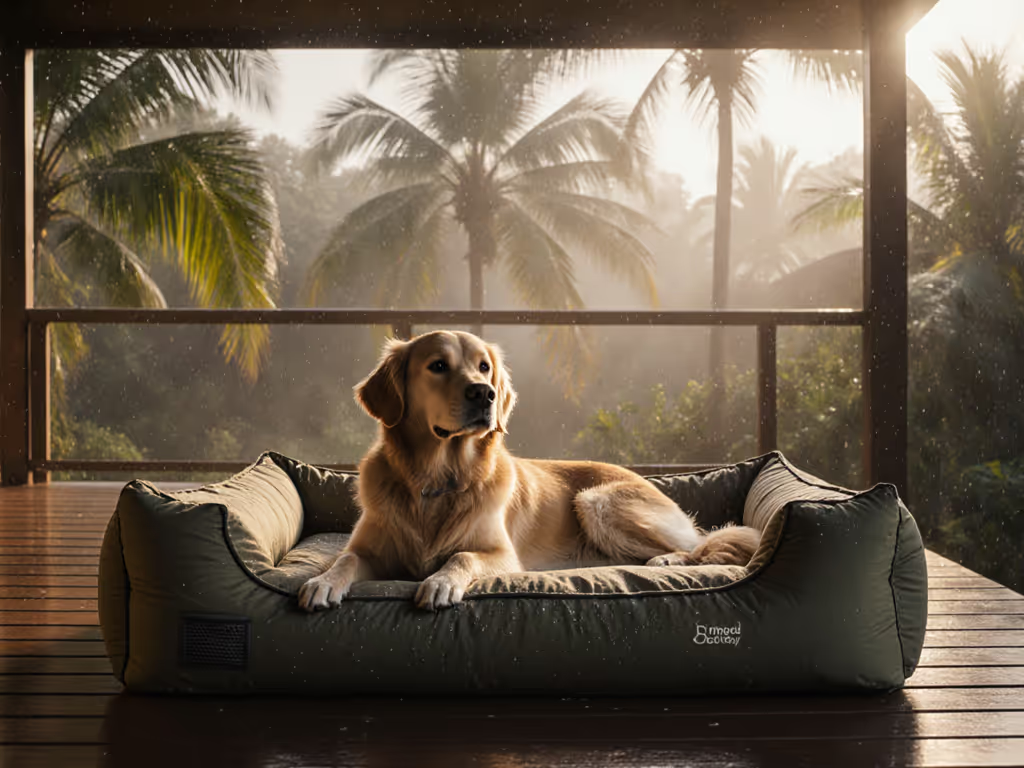
Raised Orthopedic Bed: Joint Support for Senior Dogs
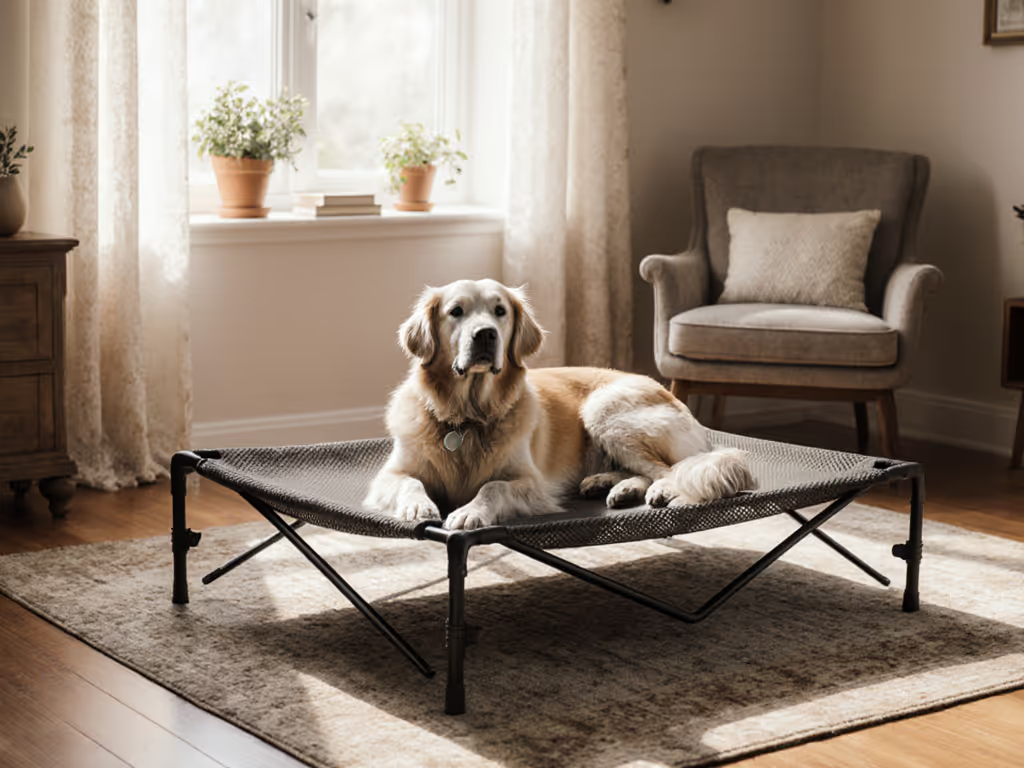
If your senior dog struggles to settle at night or seems stiff after rest, a raised orthopedic dog bed could transform their comfort. These beds aren't just elevated; they actively support dog joint health by combining pressure-relieving foam with strategic elevation to ease arthritis pain and improve mobility. As a specialist in matching dogs to their ideal sleep setup, I've seen how the right bed reduces nighttime pacing and morning stiffness. Let's address your most pressing questions about making this pivotal choice for your aging companion.
Why Elevation Matters for Arthritic Dogs
Many pet parents wonder: "Why choose a raised design over a flat memory foam dog bed?" Elevation isn't just about style (it is biomechanics). When your dog's bed sits 4 to 6 inches off the ground, it creates three critical benefits:
- Cooler sleep surface (no heat-trapping contact with floors)
- Gentler entry/exit for dogs with hip dysplasia or dog mobility issues
- Uniform spinal alignment (no sinking into soft foam that strains joints)
Dogs with arthritis often avoid flat beds because they sink too deeply. This forces them to "swim" through foam to reposition (a hidden source of exhaustion). Raised orthopedic beds use high-density foam bases with a firm, stable platform. Your dog can stand, turn, and lie down without wrestling the bed itself. Pair joint-supportive rest with low-impact exercise gear and progression tips that keep aging dogs moving safely. This matters especially for large breeds: A 70-pound Labrador shouldn't need to heave himself off a mattress that collapses under his weight.
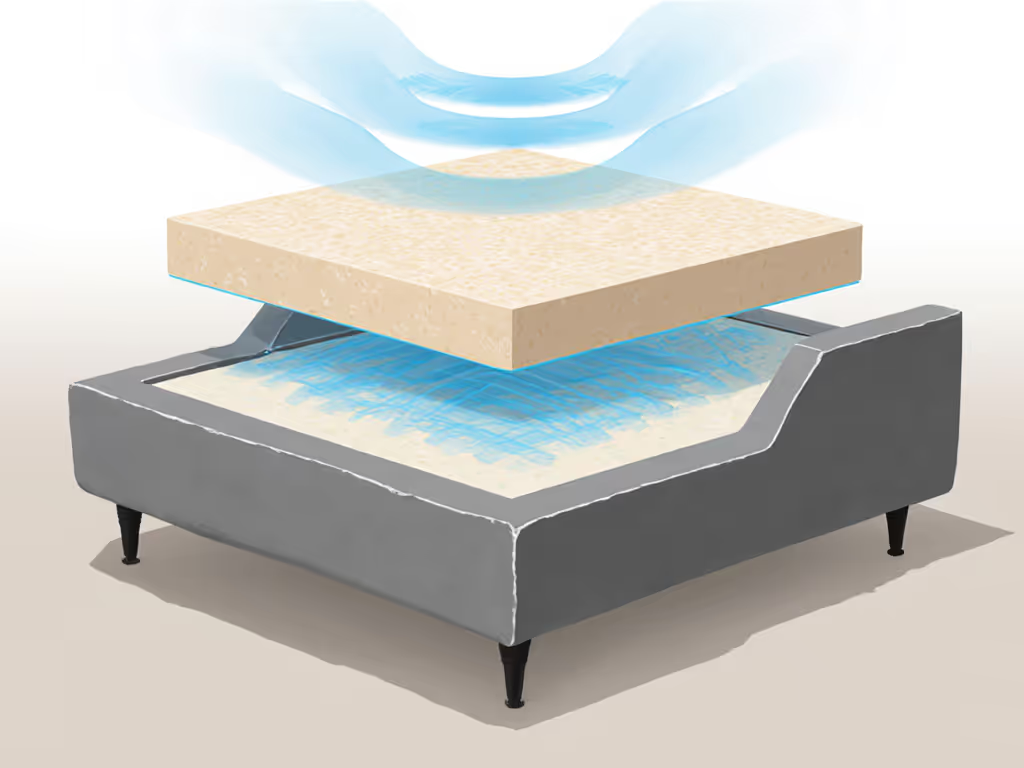
Climate Considerations: Avoiding Heat Traps
I've coached dozens of owners whose dogs rejected expensive orthopedic beds, not because of poor support, but overheating. "My German Shepherd just paces beside it!" a client told me recently. Many memory foam beds trap body heat like a sauna, worsening joint inflammation in warm climates. Always prioritize breathable covers: cotton, linen, or mesh over plush velvets. In humid regions, skip waterproof liners (they prevent airflow) unless absolutely necessary for incontinence. Start simple, fit the climate (a raised design's open frame already boosts airflow, but the cover fabric makes or breaks summer comfort).
Training Your Senior Dog to Trust Their New Bed
"My Dog Ignores the Bed... Now What?"
This is where most owners get stuck. You've invested in a perfect raised orthopedic dog bed, but your senior dog sleeps on the cold floor instead. Don't force it. I once helped a nervous rescue who paced past midnight until we moved his bed from a high-traffic hallway to a quiet corner. His blanket of shame? A heat-trapping plush pad that made him feel claustrophobic. We swapped it for breathable cotton, added a quiet fan for white noise, and used cheese-laced "place" cues for 90 seconds daily. Within a week, he claimed it as his sanctuary.
Your action plan:
- Placement first: Position the bed where your dog already rests (near your chair, not in a drafty entryway)
- Familiar scents: Drape their favorite blanket over the bed for 24 hours before use
- Short rewards: Toss treats onto the bed as you say "place" (never lure them into it)
- Patience window: Allow 2-3 weeks for full acceptance (senior dogs resist change)
The Sizing Trap Many Owners Fall Into
"It looked perfect online!" is a cry I hear weekly. Raised beds shrink usable space (the frame eats 3-4 inches per side). Measure your dog while sleeping (length from nose to tail base + 6 inches). Get step-by-step instructions in our dog bed sizing guide. If your 80-pound Mastiff sprawls diagonally, skip rectangular beds for oval shapes. For senior dog care, prioritize floor contact: Elderly dogs need to feel secure. Avoid beds with steep sides or unstable wobble (your dog's confidence hinges on stability).
Maintenance Checklist for Long-Term Joint Support
Fabric & Foam: Your First Defense Against Pain
Not all orthopedic beds deliver equal support. Look for these non-negotiables:
- Foam density: 3-5 lbs/cubic foot (lower = flattens fast; higher = too firm for joints)
- Cover breathability: Machine-washable cotton or bamboo (never polyester unless climate-controlled)
- Frame stability: Steel or solid wood legs (avoid plastic that cracks)
Pro tip: Press your thumb into the foam. If it bounces back instantly, it is too soft for dog joint health. Proper orthopedic foam slowly recovers over 5-8 seconds, which is the "sweet spot" for pressure relief.
Cleaning Simplified: Preserving Foam Integrity
Foam degrades when soaked or improperly dried. Follow this routine:
- Daily: Vacuum crumbs/hair (prevents moisture traps)
- Weekly: Spot-clean covers with vinegar-water (1:1) for odor control
- Monthly: Machine-wash covers cold; air-dry away from direct sun
- Never: Submerge the foam base. Dampness breeds mildew that accelerates foam breakdown
Hard-to-clean beds become "no-go zones" for dogs. A recent industry report found 68% of dogs avoid beds with lingering odors, compounding joint stress through restless sleep.
Your Actionable Next Step
Don't wait for stiffness to become suffering. Tonight, observe how your dog rises from their current spot: Do they groan? Push with their front legs? Stall mid-stand? These are whispers of pain. Measure their sleeping length with a soft tape now, note where they rest most often, and compare it to your space's climate (e.g., "hardwood floor near south window = warm spot"). Tomorrow, use those specifics to filter bed options by actual size and breathable materials. Small adjustments today prevent painful compromises tomorrow.
Start simple, fit the climate, reward the rest. That's how you turn "I wish they'd use their bed" into "They finally sleep through the night." And if you're still choosing between options? Remember my rescue's turnaround: Sometimes the simplest swap (plush to cotton, doorway to wall) is the kindest gift to aching joints.

